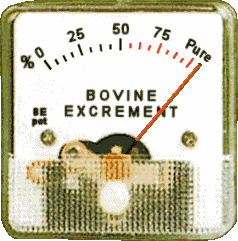… or when the right hand knoweth not what the left hand doeth.
I have an account with Chase. You know, JP Morgan Chase, which used to be known as Chase National Bank. They’ve been pretty good to me and have helped a lot with some particular financial needs over the last couple of years or so.
But the other day, I wanted to do a wire transfer to another account of mine. So I went online, entered the data for the receiving account, and fired off the request.
Email: “Your wire transfer has been cancelled by our security department. Please call us for further details.“
Ok, so I call Chase and explain the system. I verify myself with account pins, one-time text messages, and various identifying data. “Oh, it’s because you’ve recently changed your password. I’ve cleared that flag, go ahead and re-submit the request.”
Fine. Request the wire transfer again.
Email: “Your wire transfer has been cancelled by our security department. Please call us for further details.“
What the…? OK, I call them and we go through the same rigamarole again. “Sorry, I don’t know what was said during the previous call, but they didn’t identify you properly.” Provide all sorts of information again. “OK, I’ve reset the account. Go ahead and request the transfer again.”
Also: Got a voicemail message and a text message from Chase Fraud Department. “Please call us to clarify some activity on your account.” On a side note, the voice mail was left by someone with a very heavy India accent, leading me to believe this might have been a scammer at work.
Call Fraud Department. The message was legitimate. I am asked for a whole new raft of identifying information, including questions about where I have lived, what cars I have owned, and so forth. I am told all is well. Please submit the request again.
Email: “Your wire transfer has been cancelled by our security department. Please call us for further details.“
Shiva H. Vishnu! By this time I’m pulling out my hair. And another text message from the Fraud Department.
Call Chase back, and call the Fraud Department again. Go through the excruciating process of identifying myself for the third time. Everyone decides that it’s because I’m making the request from Florida, and my normal residence is Maine, so the “back office” as they call it is automatically rejecting the transfer because they think it’s fraudulent. By this time I have provided identifying information to Chase five different times.
“You’ll have to go to a local branch to make this transfer.”
Wow. Well, it’s a good thing there are close branches here in Florida where I’m staying for the winter.
To make a long story short, the teller asks me all the same questions again. She has to refer me to someone else in the branch office. Finally someone comes over to help. It takes me about 15 minutes to get her to understand what I’m trying to do and what has happened in the past. She has to get someone else in her branch to approve the transfer request, and she has to call the Fraud Department herself, whereupon in the course of a three-way call I have to provide all my identifying information for the sixth time, perform mathematical operations on my driver’s license number, promise them my firstborn, stand on my head and spit nickels, and tell them that yes, indeed, I would like to make this wire transfer and that no, indeed, the money is not going to Nigeria, but is simply being transferred to another account I own, and Yes, I know the recipient.
At last. The transfer is effectuated.
Now, don’t get me wrong. Banks these days do their very best to protect their clients’ accounts, and fraud is absolutely rampant. Years ago my mother was almost scammed out of $65,000 by a filthy Russian bottom feeder who played the “You’ve won a million dollars, all we need is the taxes and fees” game with her. Being borderline senescent, she sent the money. By a miracle, when I told the bank what was going on, they were able to reverse the transaction (which sent money to an account in Cyprus) before it had been withdrawn, and Mom only lost about $6,000, the amount of the first request (and these skells will keep milking victims for every cent they have as long as the mark keeps sending money.) As a happy footnote, the FBI and the RCMP working together arrested these guys and at least one of them spent a good deal of time in prison. I hope he enjoyed the experience.
So I appreciate the security efforts on behalf of their customers. But in this case, things went beyond the pale, and it should not have taken the better part of a day to get a simple wire transfer effectuated, especially when I was able to properly identify myself to multiple functionaries at Chase, all of whom promised that my problem had now been resolved.
All’s well that ended well, but just reeeee-ing into the void here because the experience was so frustrating.
Cat tax.

The Old Wolf has spoken.

















